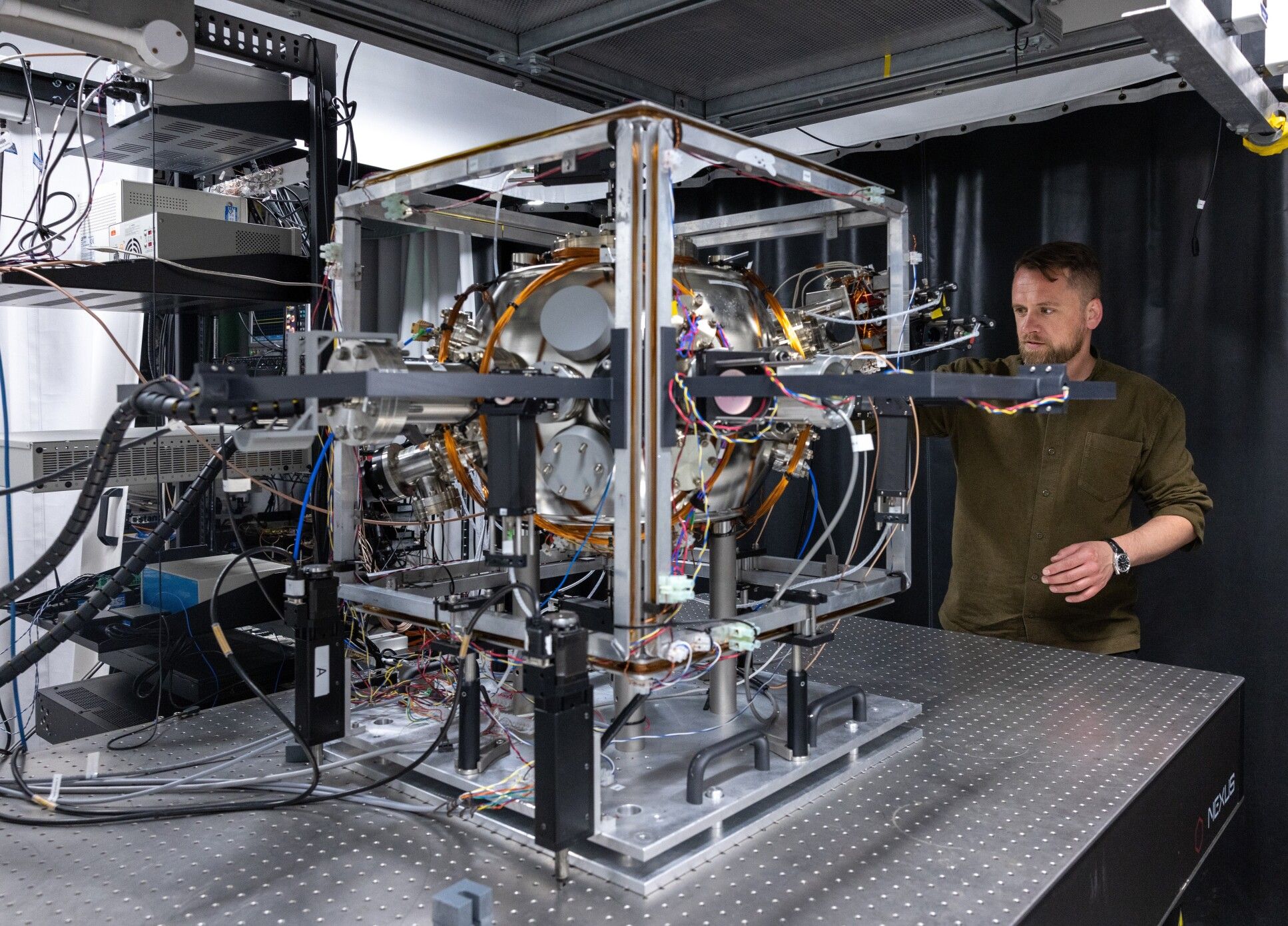Successful testing of a quantum accelerometer developed by Imperial College London may set a new direction for navigation technology.
First announced in 2018, the self-contained quantum accelerometer device does not rely on external signals like GPS or other satellite alternatives.
Initial testing has been successfully conducted by the Royal Navy.
(A prototype was integrated into a Qinetiq NavyPOD – an interchangeable rapid prototyping platform – before setting sail to London aboard a new Royal Navy research ship, the XV Patrick Blackett. Commanding Officer Michael Hutchinson described it as “an exciting and interesting opportunity for all of us”, adding that “the testing has gone well but the technology is still in its very early stages.")
How a quantum accelerometer works
M Squared, a Scottish company heavily involved in the project, describes the process underpinning the accelerometer as follows:
"Atom interferometry uses a sequence of finely tuned, retro-reflected laser pulses to manipulate the quantum states of a cloud of cold atoms. The atoms accumulate a phase due to accelerations experienced during interferometry along the axis probed by the lasers. Precise measurements of accelerations use the laser system as an optical reference to measure the atomic quantum phase. The laser system must therefore have excellent phase noise properties and be extremely stable. Our quantum accelerometer measures accelerations perpendicular to gravity. Measurements are made by firstly capturing and laser cooling a cloud of 108 rubidium atoms close to absolute zero.
"After turning the cooling lasers off, the cloud falls under gravity and atom interferometry takes place using three pulses of light in the orthogonal direction. The first laser pulse splits the cloud into two momentum states. After a duration, T, a second pulse is applied to reverse these momentum states. The clouds recombine after a further duration T, where the final pulse is then applied to create interference of the atomic cloud. The accumulated phase is then measured with a final set of pulses to detect the output states of the atoms, and hence the acceleration of the device.
"As the system measures accelerations perpendicular to gravity, the cloud falls through the probing beam during interferometry. Therefore, large beams must be used to ensure the cloud experiences a uniform laser intensity across all the pulses of the interferometer. This increases the required power to reach laser intensities needed to maximise the interferometer’s performance. Our phase locked SolsTiS system provides this power overhead in addition to excellent phase noise properties, allowing highly accurate measurements to be made. The dynamic tunability of the system also allows all the required frequencies for laser cooling and atom interferometry to be derived from the same laser set, eliminating the need for additional lasers.
As most current navigation systems rely on global navigation systems (GNSS), such as GPS, a quantum compass could potentially allow vehicles and vessels to navigate precisely in regions of low or no satellite coverage – or during periods of sustained outages or jamming of satellite navigation services.

The accelerometer works by measuring how an object’s speed changes over time and by combining this information with rotation measurements and the initial position of the object, it calculates a current location.
Imperial's prototype uses ultracold atoms to make highly accurate measurements that can sustain without requiring external references from a GNSS. According to the Ministry of Defence which backed the project, atoms when cooled to extremely low temperatures, display their ‘quantum’ nature, resulting in wave-like properties. As the atoms move through the sensor, they form an ‘optical ruler’ by using a series of laser pulses. This allows the acceleration of the atoms to be precisely measured without reference.
Professor Peter Haynes, Director of the Centre for Quantum Engineering, Science and Technology (QuEST) at Imperial, said: “The quantum accelerometer is a pioneering technology at the forefront of quantum innovation. It has the potential to transform navigation by making it more accurate and secure. This work represents the latest advance in Imperial's long track record of world-leading research in quantum science…”








